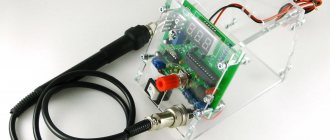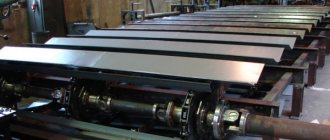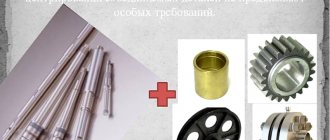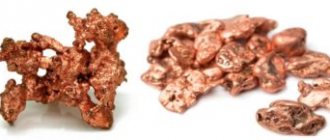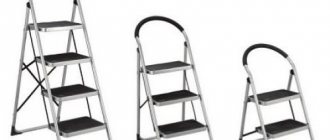The water supply to a private house located outside the centralized system is based on water supply from autonomous sources - a well, borehole or storage tank (less commonly). A feature of underground sources is the lack of pressure necessary to lift water upward. Therefore, in order to continuously supply a site or building, you need to purchase a regulating installation for water delivery - a pumping station or, in other words, a hydrophore for a private house.
The purchase of pumping equipment is based on taking into account the characteristics of all parts of the system, their compatibility, suitability for a specific source (well or well), as well as the choice of location for installation. Installation of a pumping station can be carried out at various stages: during the construction of a house, drilling a well or repair work.
For installation, you will need a closed, flat area of minimum size (1-1.5 m²), located in a utility room, basement or outdoors. If you consider the best place to be a corner in the house (bathroom, veranda, cellar), then take care of good sound insulation, even if the equipment is equipped with the necessary certificates.
- 2 Aspect #2 – volume and pressure of the unit
- 3 Aspect #3 – source of water intake
- 4 Aspect #4 – installation conditions and location
Tips: how to install a pumping station in a private house
A pumping station is a set of systems for transferring liquid from one place to another. Pumping stations are used not only for water supply, but also for sewerage in a country house or country house.
Such systems of pumping stations (crazy) consist of:
- Pump;
- Hydraulic accumulator and connections to it;
- Control pressure switch.
If you are not confident in your abilities, then it is better to turn to professionals to install a pumping station.
With the help of a pump, water is taken from the source and transferred to the hydraulic accumulator. The hydraulic accumulator stores water under pressure for subsequent supply for consumption. As soon as the pressure in the accumulator drops to the set level, the pressure regulating relay turns on the pump for a new water intake. This process is cyclical.
In addition, the turret can be used to create or maintain the required pressure in the water supply system.
In sewer systems, pumping stations lift wastewater to higher ground. This is necessary if the pipeline is located on an uneven surface or if the room is located below ground level, where gravity flow of liquids is not possible.
Common mistakes
When installing all components of plumbing equipment, a number of common mistakes are possible, knowledge of which will help you avoid them:
- Small stock of pipe lengths used. Often overlooked are the presence of corners and the thickness of the foundation, which increase the distance to be laid. Be careful. It’s better to overpay for an extra length that can be reduced than to worry about increasing the product and losing large sums on sealed adapters.
- Tightening threaded fasteners with bare hands. At the moment of tightening, it may seem that the part is seated tightly, but during operation it may leak. Be sure to use a key to ensure complete sealing.
- Negligence in relation to the hydraulic accumulator. Be sure to check the internal pressure in it. If it falls below 1.2 atmospheres, then it must be increased using a compressor or pump for cars.
Filtration system at the station
Any water carries many impurities in the form of sand, clay and other heavy elements. They are harmful enough to the internal structure of the equipment that, if accumulated in large quantities, they can damage it. Therefore, if you want to extend the life of the station, its installation is required.
But at the same time, it is necessary to remember about the negative effect: a decrease in the force of water influx. To prevent this problem, it will be enough to regularly clean the dirty filter elements. The main thing is to prevent the system from becoming completely clogged, which will certainly lead to a breakdown of the device.
Pumping station connection options
When choosing a pumping station, the important question is the parameters of its operation - the power of the electric motor, the maximum storage volume of the hydraulic accumulator, productivity, and the height of water rise. To connect the water supply in a private house, townhouse or country house, you first need to decide on the method of pumping water.
Namely:
- Using a pump connected to a well or well, directly to the consumer.
- Using a pump and storage tank.
- Using a pump and hydraulic accumulator.
Some stores provide installation services for pumping stations.
Water consumption should also be taken into account. At a dacha or in a private house, water is used not only for domestic needs in the kitchen and bathroom, but also for watering the garden plot. The water source may contain various impurities: sand, silt, leaves, etc. To avoid debris getting into the pump and further failure, it is necessary to install an additional filter at the water intake point.
Assembly diagram with a submersible pump
Starting pumping equipment
A pump of any type has decent power, for this reason, it is better for the pumping station to have separate wiring with grounding and install an automatic machine.
- Before starting, the pumping unit should be filled with water and the pressure checked.
- The pump is connected to the network
- Open the filler funnel slightly to allow the remaining air to escape.
- Supply power to the installation. Water should flow from the faucet in the house within a few minutes.
- If fluid movement has not begun, the installation is turned off, water is added to the hydraulic tank, and then the test is carried out again.
Recommendation All screw connections should be made with a sealant or foam tape.
The nuances of installing a pumping station in a private house
There are several classifications of pumping stations based on the mechanism of water intake. There is a pumping station with a remote ejector. The ejector is placed in a well, which allows the station to be placed in a house due to the absence of a high noise level.
The station is capable of lifting liquid from 50 m; such systems are sensitive to various water contaminants (sand, dirt, etc.).
There is a pumping station with a built-in ejector: capable of pumping water from 8 m depth, low sensitivity to water contamination by debris, but the operation of this installation is accompanied by a high noise level.
Based on the type of pumping station, installation is possible in 3 places:
- Basement : free access for maintenance and repairs, it is possible to make high-quality sound insulation.
- A separate building , which is located above the wellhead or next to the well, but the construction of such a building entails additional costs, because this building must also be heated.
- A caisson is a structure with the bottom located below the frozen level.
According to the supply method, water goes through a storage tank with a volume of up to 100 liters, which is installed in the attic of the house and serves for storage. From it it is distributed by gravity through the pipes of the house, but the water pressure is weak. The float valve controls the liquid level. This type is economical, because the pump is turned on only to fill the tank. Using a hydraulic accumulator or membrane tank that regulates pressure, you can place the system in the basement of a building, the water supply is approximately 20-30 liters. Depending on the source of water, there are surface pumps.
It is better to install the pumping station in a dry place
A pump capable of raising water from 9 m is located on the surface in a warm room; the intake occurs using a pipe or hose attached to it and immersed in the source. The pump must be protected from moisture. There are submersible pumps - they have a waterproof housing, they are placed entirely in water in a source more than 10 m deep. Submersible pumps can be borehole and well. Pumps for wells are centrifugal, have high performance, the downside is that they are extremely sensitive to various water contaminants. A well pump is easy to install, unpretentious to water quality, but has low power.
Conclusions and useful video on the topic
Video #1. Performing piping of pumping equipment:
Video #2. Detailed overview of installation in a caisson:
Video #3. Connecting the unit to the needle well:
Once you understand the structure and operating principles of surface pumping equipment, you can handle the installation without any problems. You need to choose high-quality equipment, follow the rules of its operation, and perform timely maintenance. Compliance with these conditions will ensure correct operation of the unit and uninterrupted water supply.
Please write comments in the block form located under the text of the article. Tell us about how you installed and connected pumping equipment for automatic pumping of water. Share technological subtleties that are useful to them with site visitors.
Types of pipes for a pumping station
Having decided on the type of pumping station, it becomes necessary to select the right pipes suitable for it. Rubber hoses are most often used because they are easy to install, operate and maintain (easy to remove from a well or well). In addition, the cost of a rubber hose is not very high compared to other pipes.
When choosing a hose, we are guided by two criteria:
- Allowable pressure;
- Material.
The device for the pumping station is usually called a high-pressure hose. As a rule, such hoses are equipped with a reinforcing braid made of nylon thread and are thicker than a conventional water hose for irrigation.
Both metal and plastic pipes are used for the pumping station
Since water can be used for drinking and cooking, the material for it must be food grade. The diameter of the hose must be selected to match the size of the station pipe.
In addition to hoses, plastic or metal-plastic pipes are also used. When using a surface pump, a plastic water pipe is installed in the well. For a submersible pump, it is more reasonable to install metal-plastic on the fittings, with the help of which the pipe will consist of 1-2 m segments. Thanks to this design, the pump can be removed from the source by dismantling the segments one by one.
The best furniture for a large hall
Many people wonder what furniture to choose for a large hall so that the room does not look empty and can be divided into zones. For a large room, a good option would be to create a dining room together with a living room.
The dining area should have display cases, a table, and comfortable chairs or armchairs. This area needs to be arranged in such a way that the whole family can gather during lunch or dinner.
In the recreation area you need to create the most comfortable environment so that you can relax after a difficult day at work or receive guests. This zone should emphasize the overall style as much as possible and show the refined taste of the owner.
Rules for connecting a pumping station to a well
There is such a type of pipes as low-pressure polyethylene pipes, which have a high density. There are non-pressure ones for use in sewers and pressure ones for connecting to a water supply system. This type of pipe combines the easy installation of rubber hoses and the quality of plastic pipes.
The use of plastic pipes has a number of advantages over rubber hoses:
- React less to temperature changes;
- Better withstand pressure;
- More durable;
- Safer for drinking water.
These pipes can withstand pressures of up to 16 atm, which is sufficient for a pumping station used in a private home. The service life of pipes, when used correctly, is about 50 years. To connect a pumping station in a private house, you need to decide on its location.
The station must be located close to a well or borehole, or other source of water and subject to the recommendations of the technical characteristics of the equipment.
The room in which the installation will be located must be warm during the cold season and have ventilation to eliminate possible condensation. Since the system makes noise during operation, there is no need to place it near rest areas, and to suppress vibration, the system is placed on a rubber mat or a special shock-absorbing floor covering. For proper and uninterrupted operation of the pumps, it is necessary to maintain the tightness of the pipeline. It is possible to connect a water heater to the pumping station. To do this, you need to lay an additional pipe to the water heater.
Self-production of a hydraulic accumulator
To save money, you can make a hydraulic accumulator yourself. In general, all materials are available, and the manufacturing process is not too complicated. However, at the very beginning, you need to decide on the future design of the device. And the easiest way would be to make a hydraulic accumulator without a membrane - this simple design is quite functional.
Preparation
First of all, you will need to prepare all the necessary materials:
- the most important part is the capacity. You can take a steel, aluminum or plastic tank. The volume should be within 100 liters. However, you should not take a tank that is too small; if its volume is less than 30 liters, it will be ineffective;
In addition, you will need nuts, washers, a set of hand tools and a drill for making holes in the tank.
Manufacturing of the device
Since the hydraulic accumulator does not include a membrane, it is very simple to make. The main thing is to do everything carefully. At the same time, you need to take into account the fact that the system will work under pressure, so the tank itself must be durable.
Stages of connecting a pumping station to a well with your own hands
The well piping occurs after the pipeline is installed. The head must be installed on the well casing. Then, using a long object, you need to find out the depth to which the water intake pipe will go down.
The inlet pipe of the station should be at a level of 1 m from the bottom of the well to prevent the suction of sand, stones or silt.
Next, the polyethylene pipe is fixed to the ejector unit. The length of this pipe is the sum of the depth of the well and the distance from its mouth to the pump. An elbow is installed at the well head with a rotation of 90ᵒ.
Initially, the ejector is assembled - a separate unit made of cast iron with 3 outlets for connecting pipes:
- A filter is mounted on the bottom of the ejector, protecting it from debris and dirt.
- A plastic socket is mounted on top, to which a 3.2 cm cross section is attached.
- At the end it is necessary to connect a coupling (usually bronze), which provides a transition to plastic pipes.
All necessary components for the pumping station can be purchased separately.
The pipes going to the ejector must be inserted through the elbow. Then lower the ejector to the required depth. Afterwards the head is fixed on the casing pipe. The installation diagram of the system is simple, so you can install it in a country house or private house with your own hands. Connecting the elements must be airtight, since excess air intake can lead to a malfunction of the system and a drop in pressure in it. Next comes the insertion of pipes into the installation site of the system.
Some valuable recommendations
Threaded connections must be tightened with a wrench and not by hand to ensure the required tightness. To connect fittings, protective devices and the pumping station itself, it is better to use pipes whose diameter is slightly larger than the calculated one in order to compensate for the load increased due to bends in the line.
To protect the pump from idling, you can install a recirculation line. To do this, tees are placed on the supply and suction pipes and the free pipes are connected with a return line.
A valve should be placed on it to control the intensity of the reverse flow. This addition will improve the pressure, but will slightly reduce the performance of the device.
The pumping station is placed on a perfectly level base equipped with shock-absorbing pads. This will reduce the vibration impact and also reduce the amount of noise.
About once every three months you need to check:
- condition of joints for leaks.
- condition of filters for timely cleaning.
- relay settings for their correction;
- the condition of the hydraulic tank to determine the location of leaks.
If the pressure level in the HA does not meet the required level, it is easy to pump it up using a compressor or pump. On larger containers a nipple connection is provided for this purpose. If fluid leaks from the hole, the inner membrane is torn and needs to be replaced.
How to connect a pumping station to a well
To prevent the well from freezing, pipes must be laid below the soil freezing level. Each region of the country has its own level, which you can find out yourself in special tables. As a rule, sewer pipes are first laid in the trench, and water pipes are laid inside it.
The sewer pipe serves as a protective layer.
All pipes must be insulated. In areas with severe winters, it is permissible to install a heating cable. When laying pipes, the slope is made towards a well or borehole. You can also make a pit to facilitate station maintenance.
Before connecting the pumping station, you should inspect all parts for damage.
You can connect the station to the well in 2 ways:
- Fastening to the top edge of the well using a removable fastener.
- Using a wall bracket to the wall of the well.
Installing a pumping system in a well requires insulating the above-ground part. A sewage pumping station is capable of temporarily storing and moving wastewater using outdoor sewer pipes. The station itself is installed on a reinforced concrete foundation with a height of 30 cm and is fixed with collet anchors. For anchors, it is necessary to make holes in the concrete in accordance with the grooves on the station. If there is a large amount of groundwater, then you can fill it with concrete.

